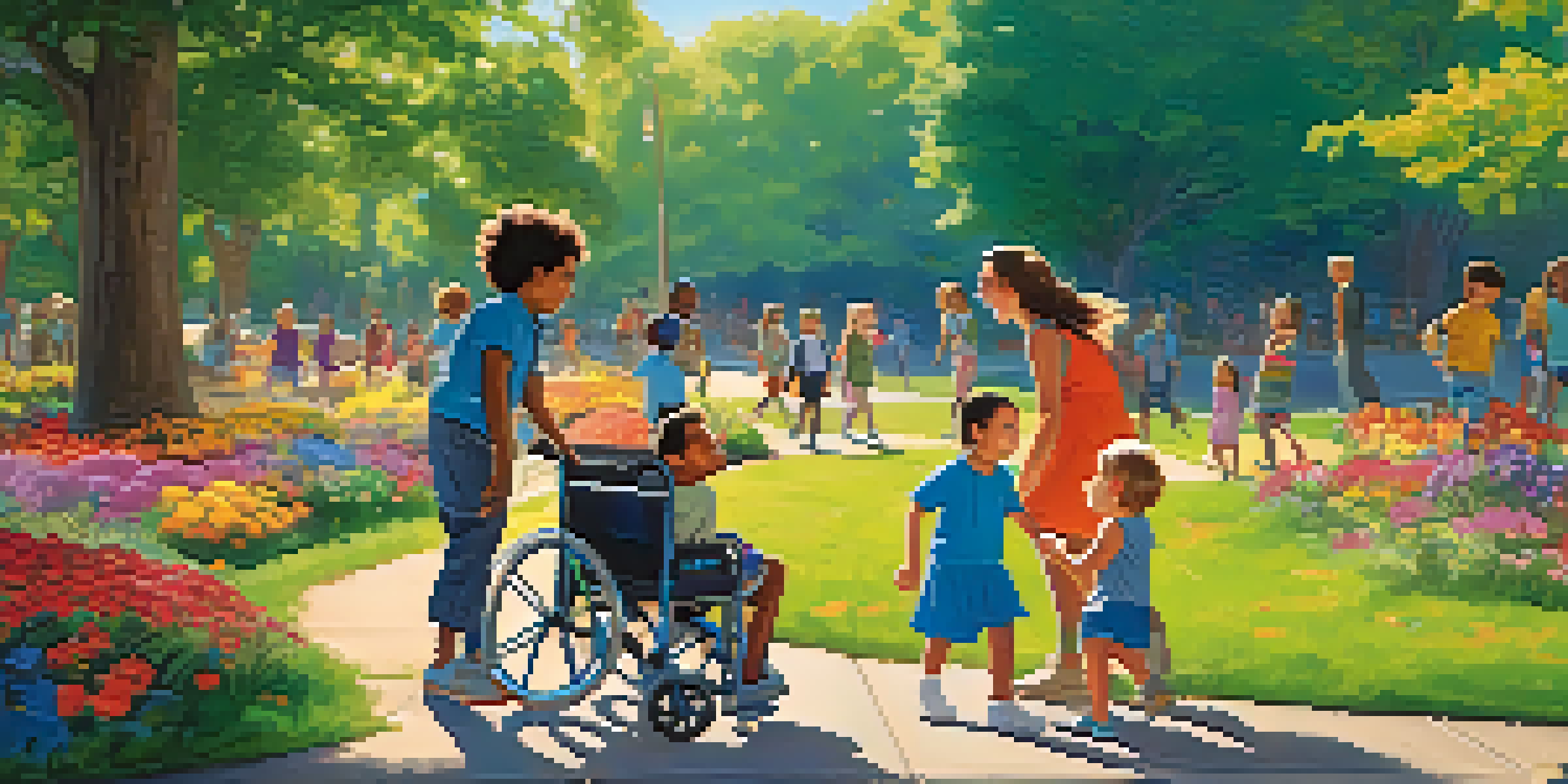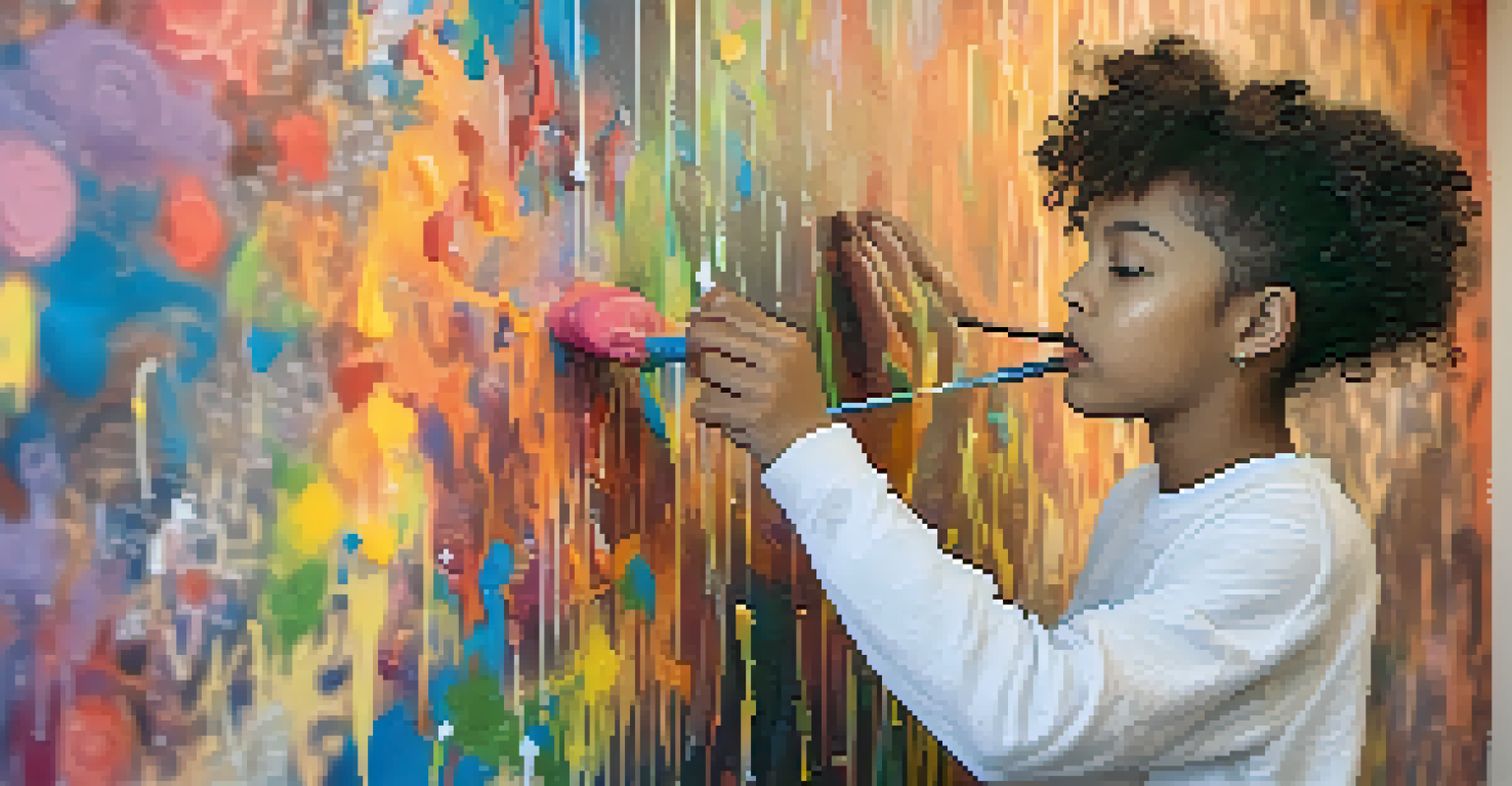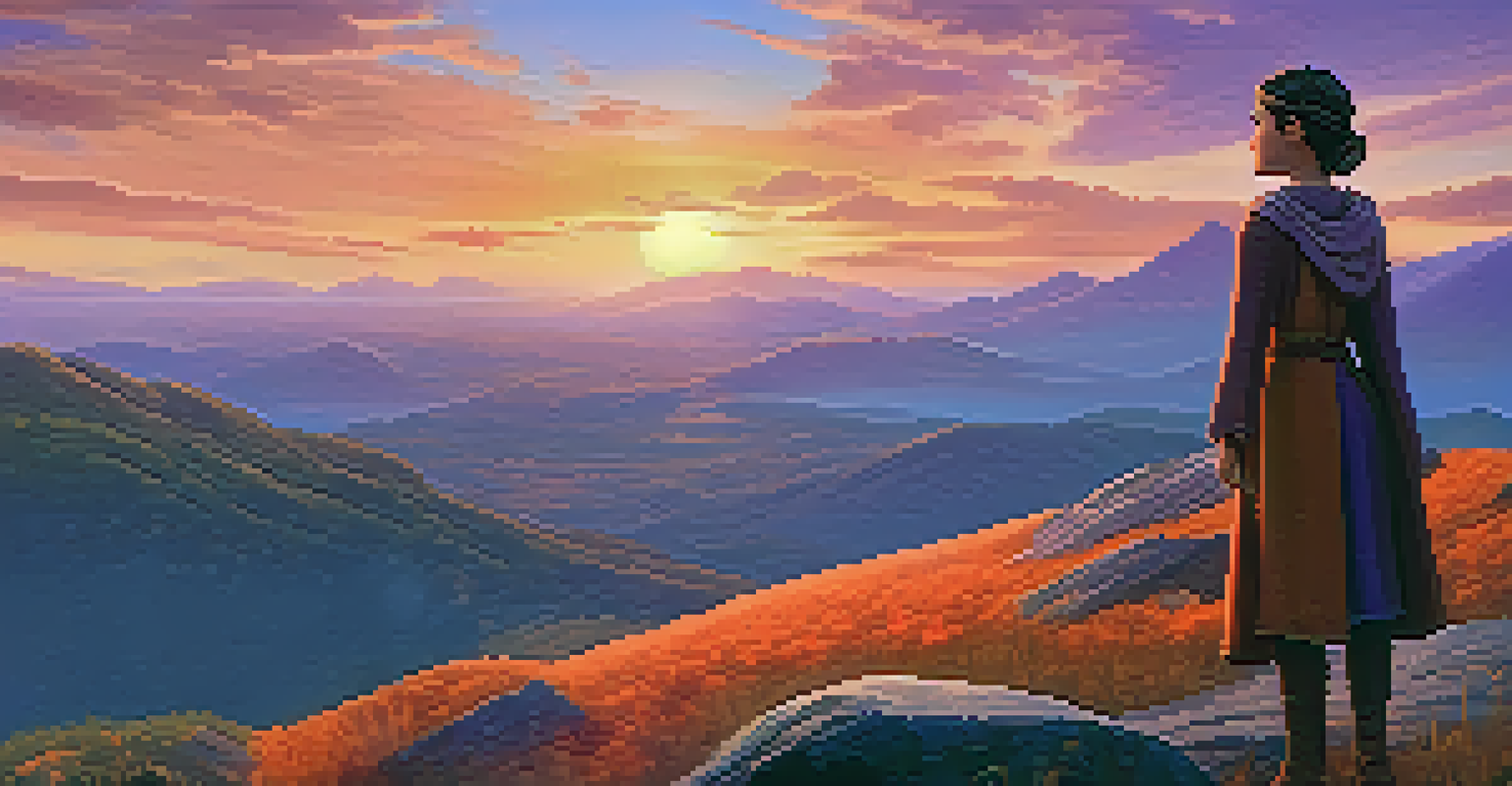Disability Representation in Animated Films: An Overview

The Importance of Disability Representation in Animation
Representation in animated films is crucial as it reflects societal values and norms. When characters with disabilities are portrayed, it allows audiences to see diverse experiences, fostering empathy and understanding. Ultimately, it can help to break down stereotypes and encourage acceptance.
Animation is a powerful medium for expressing the complexities of human experience, including the experiences of those with disabilities.
Animated films have the power to shape perceptions from a young age, making it essential to showcase characters with disabilities authentically. This not only validates the experiences of those with disabilities but also educates viewers on the challenges they face. By normalizing disability in animation, we can promote inclusivity in society.
Moreover, representation can empower individuals with disabilities, showing them that they too can be heroes and integral parts of stories. This visibility can inspire confidence and pride, reinforcing the message that everyone has a place in the narrative.
Historical Context: Disability in Early Animation
Historically, animated films often depicted characters with disabilities in a negative light or as comic relief. Early animations frequently reinforced stereotypes, portraying individuals with disabilities as pitiable or eccentric. This lack of nuanced representation contributed to a skewed understanding of disability in society.

For instance, characters like Quasimodo in Disney's 'The Hunchback of Notre Dame' were predominantly shown in tragic contexts, emphasizing their struggles rather than their strengths. Such portrayals perpetuated a narrow view of what it means to live with a disability, leading to misconceptions.
Representation fosters empathy
Authentic portrayals of characters with disabilities in animation promote understanding and acceptance among audiences.
As animation progressed, there began to be a shift toward more multifaceted characters. However, it wasn't until the late 20th century that we started seeing more balanced and respectful representations of disabled individuals in animated features.
Progressive Representation: Modern Animated Films
In recent years, there has been a noticeable shift towards more progressive representation of disability in animated films. Movies like 'Big Hero 6' feature characters like Hiro, who navigates loss and grief, presenting a more humanized portrayal of challenges. This shift reflects a growing awareness of the importance of diversity and inclusion in storytelling.
Diversity in storytelling is essential; it allows us to see the world through different perspectives and fosters a deeper understanding of one another.
Animated series such as 'Steven Universe' also explore themes of identity and acceptance, incorporating characters with disabilities into their narratives. These stories are celebrated for their relatability and the depth they bring to characters, allowing viewers to connect on a personal level.
Moreover, the involvement of creators with disabilities in the animation process has led to more authentic storytelling. Their unique perspectives contribute to richer narratives that resonate more deeply with audiences and challenge existing stereotypes.
Challenges in Representation: What Needs Improvement?
Despite progress, challenges remain in the representation of disability in animated films. One major issue is the tendency for able-bodied actors to voice characters with disabilities, which can lead to inauthentic portrayals. This practice not only limits opportunities for actors with disabilities but also detracts from the authenticity of the character.
Moreover, many films still fall short in depicting the full range of experiences that come with disabilities. Often, stories focus solely on the disability itself rather than exploring the character's life, aspirations, and relationships. This oversimplification can lead to a one-dimensional understanding of individuals with disabilities.
Historical stereotypes persist
Early animations often depicted disabilities negatively, emphasizing struggles over strengths and reinforcing societal misconceptions.
To truly improve representation, the industry must prioritize hiring talent with disabilities both in voice roles and behind the scenes. This approach ensures that stories are told with authenticity and respect, ultimately leading to richer, more varied narratives.
The Role of Audience in Shaping Representation
Audience engagement plays a pivotal role in shaping the future of disability representation in animation. As viewers demand more authentic portrayals and inclusive storytelling, studios are increasingly responsive to these calls for change. This shift is not only beneficial for the industry but also for society as a whole.
Social media platforms have become powerful tools for advocacy, allowing individuals to voice their opinions and experiences. Movements pushing for representation have gained traction, prompting discussions around the importance of diverse narratives in animated films. This public discourse encourages creators to be more mindful of their portrayals.
Ultimately, audiences have the power to influence the direction of animation by supporting films and shows that prioritize authentic representation. By celebrating diverse stories, viewers can contribute to a more inclusive and understanding world.
Case Studies: Notable Films and Their Impact
Several animated films have made significant strides in representing disability, serving as case studies for effective storytelling. Disney's 'Raya and the Last Dragon' features a strong female lead who embodies resilience, showing that characters with disabilities can be portrayed as heroes. This progressive approach is a step forward in breaking stereotypes.
Another notable example is 'Soul,' which explores themes of purpose and identity while featuring a character who navigates life with a disability. The film's nuanced portrayal encourages viewers to look beyond disability, focusing on the character's passions and dreams instead. Such narratives can significantly impact how audiences view individuals with disabilities.
Industry change is needed
To improve representation, the animation industry must hire talent with disabilities and prioritize authentic storytelling.
These films not only entertain but also spark important conversations about disability representation, challenging viewers to reflect on their perceptions. By analyzing the impact of these films, we can better understand the role animation plays in shaping cultural narratives.
Looking Ahead: The Future of Disability in Animation
The future of disability representation in animated films looks promising, with an increasing number of creators advocating for authentic narratives. As discussions around diversity and inclusion continue to gain momentum, we can expect to see more stories that reflect the complexities of living with a disability. This progress is vital for fostering empathy and understanding in society.
Moreover, the rise of streaming platforms has created new opportunities for diverse stories to be told. With a wider range of content being produced, there is potential for more animated series and films that focus on disability, offering fresh perspectives and experiences. This shift could lead to a new era of representation in animation.

In conclusion, as audiences advocate for change and creators embrace inclusivity, the landscape of animated films will continue to evolve. The journey towards authentic representation is ongoing, but with collective effort, we can look forward to a future where all stories are celebrated and valued.